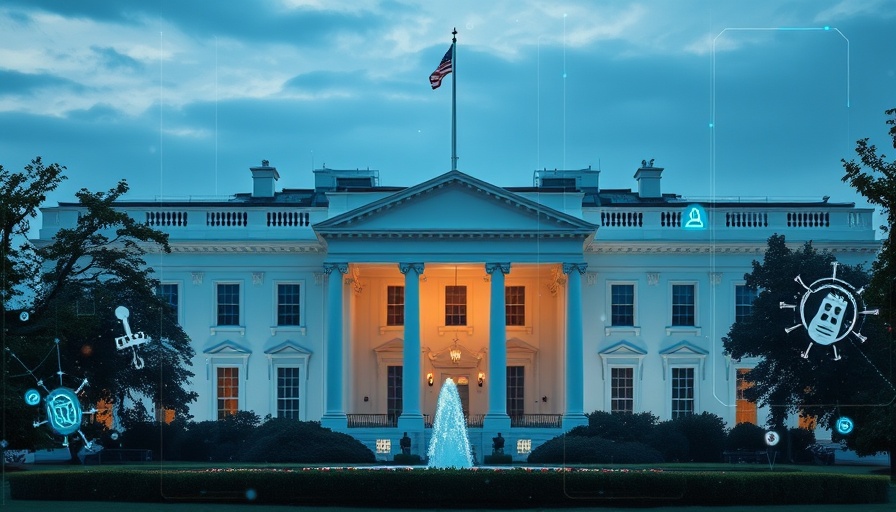
Understanding Trump's AI Action Plan: The Push for Dominance
The recent unveiling of the Trump administration's AI Action Plan has set the stage for a significant shift in the U.S. approach to artificial intelligence and its infrastructure. Aimed at establishing "global AI dominance," the plan seeks to deregulate various sectors, including tech and data management, to accelerate the growth of AI. But what are the implications of cutting regulations in this rapidly evolving field?
Key Proposals and Significance
Central to the AI Action Plan is the commitment to reduce regulatory barriers that tech companies currently face. Trump emphasized that his administration would leverage every available tool to ensure the U.S. maintains its position as a leader in AI technology, a sentiment echoed by Jason Oxman, president of the trade group ITI, calling it a blueprint for future success.
However, critics voice concerns that these deregulations may prioritize corporate interests over consumer protections and environmental regulations. Organizations like the Consumer Federation of America argue that the plan could lead to diminished safeguards for the public as large corporations are granted more latitude in their operations.
Comparative Analysis with Global Standards
As the administration focuses on outpacing China in the tech race, this move comes at a critical juncture. Other nations have established comprehensive regulatory frameworks that manage the ethical implications of AI. By contrast, the U.S. approach may foster rapid innovation but at what potential cost? Some experts believe that without a balanced regulatory environment, the risk of misuse or harmful outcomes from AI technologies could escalate.
Environmental Considerations and Industry Impact
The inclusion of fossil fuel production as part of the infrastructure boom raises vital questions about sustainability. While the AI Action Plan aims to bolster economic growth through technology, it could inadvertently support environmentally harmful practices. As we move into a digital era dominated by data centers, the energy consumption and environmental footprint of these facilities must be scrutinized.
Public Sentiment on AI Deregulation
The American public remains divided on issues surrounding AI, balancing innovation against safety. Many are hopeful about the potential benefits of AI in everyday life, from enhanced healthcare solutions to improved accessibility. Yet, an overwhelming concern exists about protecting personal privacy and preventing exploitation. The effectiveness of Trump’s proposals may hinge on how well the benefits can be communicated to the public while addressing their fears.
Looking Ahead: The Future of AI in America
As we look to the future, it's essential to consider how this AI Action Plan will shape the landscape of technology in the U.S. Will it spawn innovations that significantly enhance our quality of life, or will it lead to increased disparities and risks? It could very well create a scenario where unregulated AI accelerates while oversight struggles to catch up.
Conclusion: Taking Action for a Balanced Future
Considering the sweeping changes proposed in Trump's AI Action Plan, individuals and communities should remain engaged in discussions on how AI development impacts their lives. It is crucial to advocate for regulatory frameworks that both allow growth and foster responsible usage of AI technologies. This balance is essential not only for consumer protection but also for ensuring that technological advancements align with societal values.
As a reader, staying informed and participating in conversations around AI can shape a future where innovation and ethical standards coexist harmoniously.
 Add Element
Add Element  Add Row
Add Row 



Write A Comment